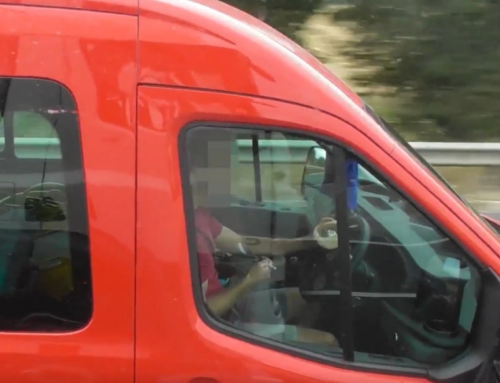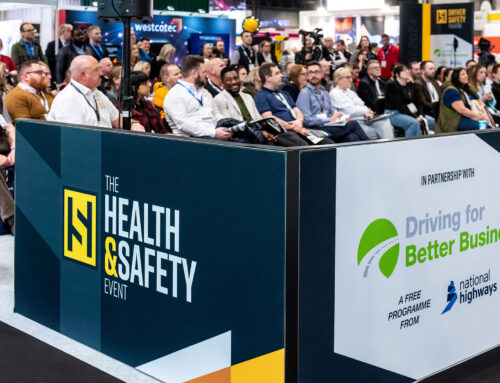Driver Safety Zone : how to learn from failure
The second day of the Driver Safety Zone at the Health and Safety Event (Birmingham NEC 8-10 April) focuses on how health and safety professionals can learn from failure rather than fearing it.
The sessions on Wednesday 9 April kick off with National Highways Head of Commercial Vehicle Incident Prevention Mark Cartwright leading a discussion with experts from Mitie and Evri, examining their incident investigation procedures.
Stefan Szrama, QHSE Lead for Fleet and Procurement at Mitie and Chris Floyd, Transport Safety & Compliance Lead at EVRI explain the importance of incident investigation in a just culture, where the company is seeking root causes of collisions and actionable insights to prevent further collisions, alongside accountability.
Their processes make incident investigation manageable and robust, and reveal individual and organisational failings which can then be corrected. The session complements the National Highways Guide to incident investigations which can be downloaded from the Driving for Better Business website.
Driving for work policy – a key element
The following sessions then take a deep dive into some of the key elements which would be reflected in any incident investigation, starting with the importance of a robust driving-for-work policy. Driving for Better Business Engagement Manager, Simon Turner, will explain the importance of a comprehensive, cascaded and regularly updated policy as the foundation of meeting legislative obligations under road traffic and health and safety legislation.
The DfBB driving-for-work policy builder is free for any employer to use. It is already populated with good practice text but is fully editable so that companies can customise it to fit their operation. Even if organisations already have a policy in place, registering it with the Driving for Better Business portal will trigger annual review reminders, and produce regular updates about legal requirements.
Data in a Safety Culture
Asset and driver management technology provider, Samsara, and Matthew Reid, Head of Plant & Transport, Cappagh Browne, look at how training can be led by data to address the behaviours of individual drivers. Targeted training can be more effective than blanket training, and reduces cost and wasted time.
A third factor underpinning all collision reduction is a safety culture. This encompasses values, beliefs and a solid management architecture. Penny Brooks, Driver Qualifications Portfolio Manager at RoSPA, FORS Director, Geraint Davies, Head of Compliance and Risk at EV Solutions, Andrew Mawson and Transafe Network Director, Saul Jeavons, will discuss the roles of leaders, managers and road safety champions in achieving true behavioural change. They will also share best practice and hard-won experience.
Is a fear of failure limiting your success?
Co-Founder and Head of Operations at Sandstone Communications, Tim Bradshaw, takes this discussion one step further in his presentation. A graduate of Sandhurst and a former covert human intelligence officer, Tim says two things limit an organisation’s success: a focus on process, rather than outcomes, and a fear of failure. He will examine both, showing how to push through the perception of an issue to the reality, and how to empower teams and individuals to take responsibility for decisions without fear of failure.
Day three of our Driver Safety Zone will highlight many of these issues in action. Solera and Turners of Soham will show how Turners has enhanced its driver safety through the use of AI, cameras and data to make driver behaviour and welfare visible to managers.
Durgadutt Nedungadi is Senior Vice-President of International Business at Netradyne Technology, a global provider of driver safety and coaching technologies. Durgadutt will share how AI and generative-AI systems can empower HSE leaders with a technology-driven, holistic approach to improving driver behaviour, increasing safety, and fostering engagement.
Finally, Tim Bradshaw will give a first aid lesson unlike any you have seen before. People don’t have accidents in classrooms so Tim takes first-aid training into the real world, and shows how responders can adapt in real time and real-world conditions to administer life-saving care – and it looks nothing like the sanitised classroom where most of us learned. An unmissable, and potentially life-saving, presentation.






